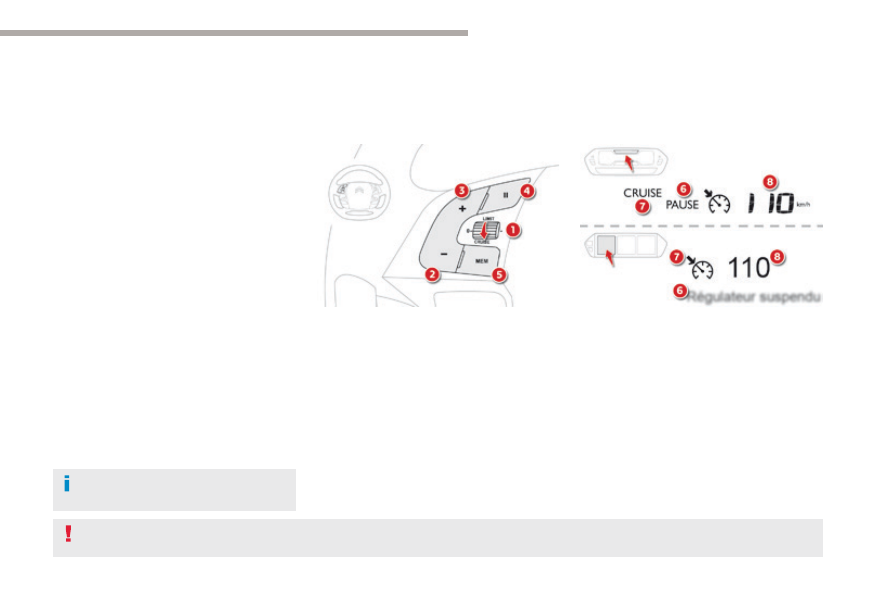Citroen C4 Picasso (2017 year). Instruction - part 11

159
4
Driving
C4-Picasso-II_en_Chap04_conduite_ed02-2016
Steering mounted controls
6.
Cruise control pause / resume indication.
7.
Cruise control mode selection indication.
8.
Speed setting.
Cruise control - "CRUISE"
System which automatically maintains the speed of the vehicle at the value programmed by the driver, without any action on the accelerator pedal.
The cruise control system cannot, in any circumstances, replace the need to observe speed limits, nor can it replace the need for vigilance on the part of the driver.
You are advised to keep your feet near the pedals at all times.
Switching on the cruise control requires a
minimum vehicle speed of 25 mph (40 km/h).
As well as engagement of:
- fourth gear or higher on a manual gearbox,
- second gear or higher in manual mode on
an automatic gearbox,
- position
D
on an automatic gearbox.
The system remains active after changing gear
on vehicles with a manual gearbox and Stop &
Start.
The cruise control is paused
by pressing
button 4
or the brake pedal or on triggering of
the ESC system for safety reasons.
It is possible to exceed the programmed speed
temporarily by pressing the accelerator pedal.
To return to the programmed speed, simply
release the accelerator pedal until the
programmed cruise speed is reached again.
1.
Select cruise control mode.
2.
Set the current speed of the vehicle
as the programmed speed / Lower the
programmed speed.
3.
Set the current speed of the vehicle
as the programmed speed / Raise the
programmed speed.
4.
Pause / resume cruise control.
5.
Display the list of memorised speeds or,
Accept the speed suggested by the speed
limit recognition system.
Displays in the instrument panel
Switching off the ignition cancels any
programmed speed value.
For more information on Memorising speeds,
refer to the corresponding section.
For more information on Speed limit
recognition
and memorisation, refer to the
corresponding section.